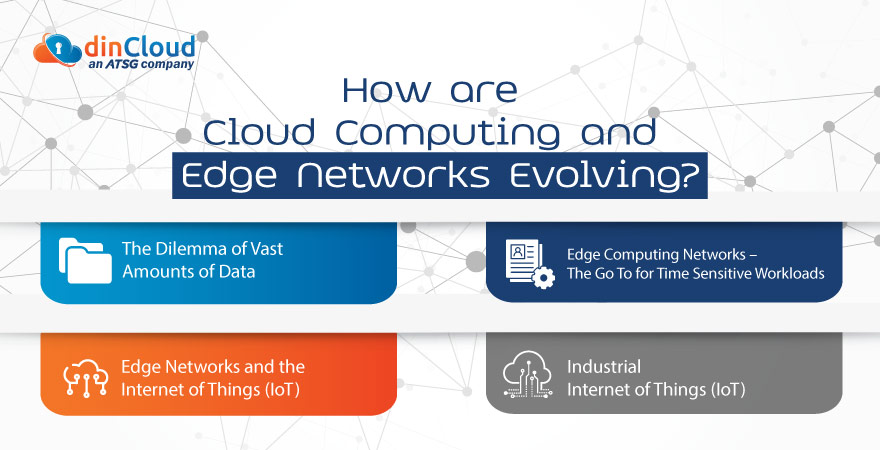From the beginning of time, we as humans have always tried for improvement and betterment. It all started from creating fire, and here we are, in today’s ultra modern technology as well as data driven world.
The sheer pace at which data is being generated right now is mind boggling. Almost every device around us, whether it’s a watch, cellphone, a car, or door lock is now a smart device capable of generating a lot of data.

The Dilemma of Vast Amounts of Data
Generating such vast amounts of data is just one part of the equation. Leveraging these large quantities of data to the utmost advantage is a completely different ballgame. However, before we can start leveraging all this data, it is vital to understand how to use it.
Data can broadly be classified into two main classes. One class of data is of critical nature, both in the immediate term, and for the times to come. This validity or “shelf life”/ of data can vary between few hours, days, weeks, months, years or maybe decades.
Related: Multi-Access Edge Computing Poised for Exponential Growth by 2027
For this class of data, it is imperative to have ample storage capacity. That is not all, the storage solutions for this type of data ought to be reliable, cost efficient and scalable in order to meet the constantly growing needs.
Then, there is another class of data, which is highly time sensitive. What this implies is that for a certain timespan, this data is extremely valuable. However, once the purpose for which the said data was collected, and processed, has been served, it becomes useless.
This post pertains to this other class of data, which is of value only till the successful completion of a task, workload, process or operation. After that, it becomes both illogical and expensive to retain this data for an indefinite period of time.
Edge Computing Networks – The Go To for Time Sensitive Workloads
In order to manage, process and draw instantaneous as well as actionable insights from this time sensitive data, we need the proliferation of Edge Computing Networks./ As the name suggests, Edge Computing delivers processing and compute at the network’s edge.
Unlike Cloud Computing environments, where data from a wide range of sources is consolidated or centralized, Edge Computing collects, aggregates, processes and delivers the outcomes of all this data without ever involving the Cloud.
Related: Enterprises all Out for Cloud Native Apps – but Challenges Abound
One pertinent point to mention here is that the non-involvement of the Cloud is only to the extent of deriving the immediate outcome from the data; which has been relayed to the Edge Network by the different smart devices equipped with various types of sensors.
In a lot of use cases, the residual data may also be of value on a much broader horizon, thus necessitating the presence and connectivity of Edge Networks with Cloud Computing environments. However, this will depend on the specific use case at hand.
Edge Networks and the Internet of Things (IoT)
We can define the Internet of Things (IoT) as an ecosystem of highly connected smart devices that are constantly generating data as output, and then receiving actionable insights from Edge Networks on the basis of processing all this relayed data.
The outcome of this combination between Edge Networks and IoT devices is a Smart Ecosystem, which could be as small as a home, and as big as an entire smart city that could be home to millions of people.
Now, let us discuss a real life application scenario where Edge Computing, coupled with Cloud Computing, can deliver extraordinary outcomes.
Related: IT Modernization – The Sooner, The Better
Industrial Internet of Things (IoT)
Some of the world’s most vibrant economies thrive on their Industrial prowess. Their industrial processes are so precise and measured that it is next to impossible for competitors to deliver the product of a similar or comparable quality.
By deploying smart IoT devices across industrial production lines, even the minutest defects can be identified by comparing key production metrics with pre-defined benchmarks. By doing so, items with even the slightest production flaws will not go through.
Imagine the component of a vehicle’s engine that is not in line with the prescribed quality and specifications. Instead of this faulty component being fitted to an automobile over the assembly line, and being shipped, the fault would be identified there and then.
On the contrary, this fault could have resulted in engine failure, or serious damage to the car. This could even pose a serious threat to human lives. In that case, the only remedy would be to announce a costly recall, which in fact also damages brand equity.
Related: The Outlook for Multi Cloud Deployments in the Year 2022
Conclusion
In the broader scheme of things, both Cloud Computing and Edge Environments tend to complement each other as technologies. It is less a matter of choosing one over the other, and more a question of which one of the two is more suited for the workload in question.
So far as time sensitive workloads are concerned, Edge Networks outshine. When it comes to handling vast amounts of data, and drawing useful insights from all this data, Cloud Computing environments don’t have any rival.
Down the road, it appears that the lines between Edge Networks and Cloud Computing infrastructures will become more clearly defined. Workloads and processes will soon be clearly attributable to either the Edge, or the Cloud.
Then, there will also be a certain ratio of workloads that will retain their validity and efficacy for both Cloud Computing, as well as Edge Networks. The architectures around such “common” workloads will have to be designed with an in-depth understanding.
Contact dinCloud, an ATSG company, for reliable, secure and scalable Cloud Computing solutions as well as services.


